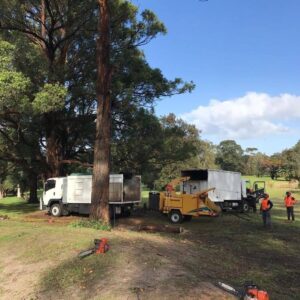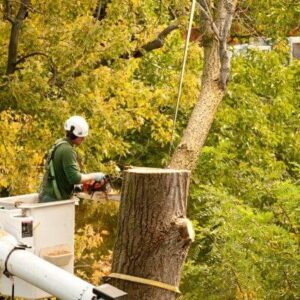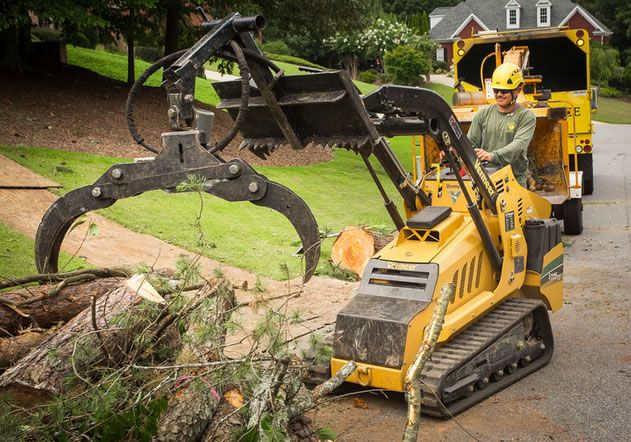Introduction to Tree Service Jobs
Tree service jobs are often overlooked but play a crucial role in maintaining the health and safety of our natural and urban environments. These roles are not just about cutting down trees or trimming branches; they involve a variety of tasks aimed at ensuring trees remain healthy, safe, and aesthetically pleasing. Whether you’re considering a career in this field or just curious about what it entails, understanding the different aspects of tree service jobs can provide valuable insight into this essential industry.

Why Tree Service Jobs Are Important
Importance to the Environment
Tree service jobs are vital for the environment. Trees are indispensable in maintaining ecological balance, providing oxygen, improving air quality, and supporting wildlife. Professionals in tree services help ensure that trees are healthy and well-maintained, contributing to a better environment for all.
Community Benefits
Communities benefit immensely from well-maintained trees. They provide shade, enhance property values, and contribute to the overall aesthetic of neighborhoods. Tree service professionals help keep public spaces safe by removing hazardous limbs and ensuring trees do not interfere with power lines or structures.
Types of Tree Service Jobs
Tree Trimmer
Tree trimmers focus on pruning trees to promote healthy growth and remove dead or hazardous branches. This job requires a keen eye for detail and an understanding of tree biology.
Tree Surgeon
Tree surgeons handle more complex tree care tasks, including tree removal, large-scale pruning, and emergency tree care after storms. This role requires advanced training and significant experience.
Tree Service Supervisor
Tree service supervisors oversee teams of tree care workers, ensuring jobs are completed safely and efficiently. They are responsible for planning, coordination, and quality control on tree service projects.
Skills Needed for Tree Service Jobs
Physical Fitness
Tree service jobs are physically demanding. Workers must be in good shape to climb trees, operate heavy machinery, and perform strenuous tasks.
Knowledge of Trees
A solid understanding of tree species, growth patterns, and common diseases is essential. This knowledge helps professionals make informed decisions about tree care.
Use of Tools and Machinery
Proficiency with tools and machinery such as chainsaws, stump grinders, and climbing gear is crucial. Training in the proper use of these tools is often provided on the job.
Safety Practices
Safety is paramount in tree service jobs. Workers must be knowledgeable about safety protocols and wear appropriate personal protective equipment (PPE) to minimize risks.
Educational and Certification Requirements
High School Diploma
Most tree service jobs require at least a high school diploma. Basic education provides a foundation for learning more specialized skills on the job.

A Typical Day for a Tree Service Professional
Morning Routine
A typical day starts early with a safety briefing and equipment check. Workers ensure that all tools are in good working condition and plan the day’s tasks.
On-site Tasks
On-site tasks vary widely but often include pruning, tree removal, stump grinding, and treating tree diseases. Workers must be adaptable and ready to handle different challenges each day.
End-of-Day Wrap-up
At the end of the day, tools are cleaned and stored, and the day’s work is reviewed. This routine helps ensure that everything is ready for the next day’s tasks.
Tools and Equipment Used
Chainsaws
Chainsaws are essential for cutting branches and trees. Proper training in their use is crucial for safety and efficiency.
Climbing Gear
Climbing gear, including ropes, harnesses, and helmets, is used to access trees safely. Workers must be trained in climbing techniques and safety protocols.
Stump Grinders
Stump grinders remove tree stumps by grinding them into mulch. This machinery requires specialized training to operate safely.
Safety Gear
Safety gear includes helmets, gloves, eye protection, and hearing protection. Having the proper equipment is crucial to avoid injuries.
Training and Protocols
Regular training on safety protocols helps prevent accidents. Workers are trained in first aid, emergency response, and safe operation of tools and machinery.
Challenges in Tree Service Jobs
Weather Conditions
Tree service work is often done outdoors, making it subject to weather conditions. Rain, snow, and extreme heat can make the job challenging and sometimes dangerous.
Physical Demands
The physical demands of tree service jobs are significant. Workers need strength, endurance, and agility to perform their tasks safely and effectively.
Safety Hazards
Safety hazards are a constant concern. Falls, cuts, and equipment-related injuries are risks that workers must be aware of and trained to handle.
Benefits of Working in Tree Services
Job Satisfaction
Many tree service workers find great satisfaction in their jobs. They enjoy working outdoors, solving problems, and seeing the immediate results of their efforts.
Outdoor Work
For those who love nature, tree service jobs offer the opportunity to work outdoors and be close to the environment daily.
Team Environment
Tree service work often involves working in teams. This fosters camaraderie and a strong sense of teamwork among workers.
How to Get Started in Tree Service Jobs
Entry-Level Positions
Starting in an entry-level position, such as a ground worker or assistant, allows individuals to learn the basics and gain experience.
Apprenticeships
Apprenticeships provide practical learning and guidance under seasoned experts. These programs are a great way to build skills and knowledge in the field.
Tree Service Jobs and Environmental Conservation
Role in Ecosystem Management
Tree service professionals play a critical role in managing ecosystems. They help maintain healthy forests, control invasive species, and promote biodiversity.
Promoting Healthy Urban Forests
Urban forests require regular maintenance to remain healthy and safe. Tree service workers ensure that trees in urban areas are properly cared for and pose no hazards to the public.
Economic Impact of Tree Service Industry
Job Creation
The tree service industry creates numerous jobs, from entry-level positions to specialized roles. This industry supports local economies by providing employment opportunities.
Contributions to Local Economy
Tree service companies contribute to local economies by offering valuable services. Their work helps maintain property values and enhances the aesthetic appeal of communities.
